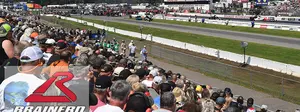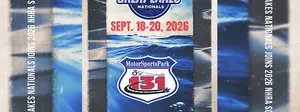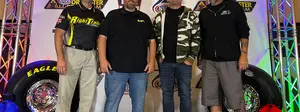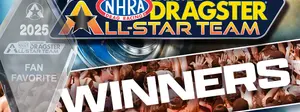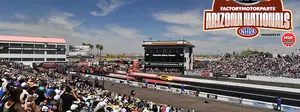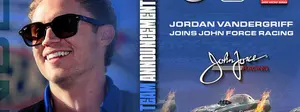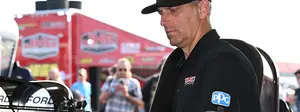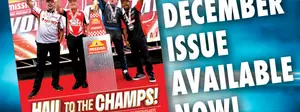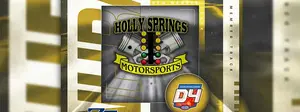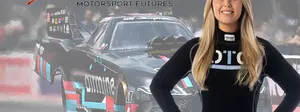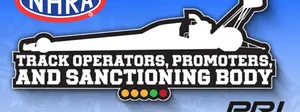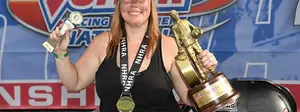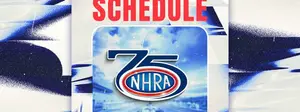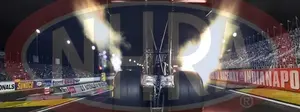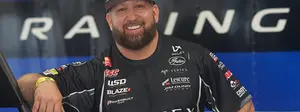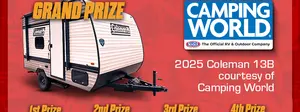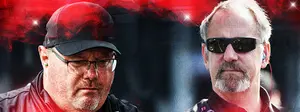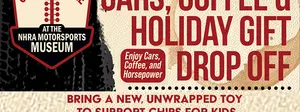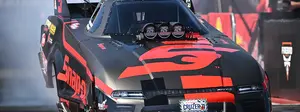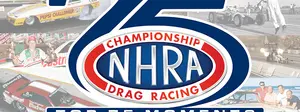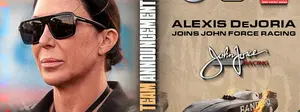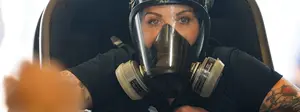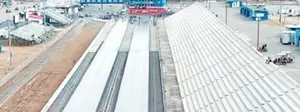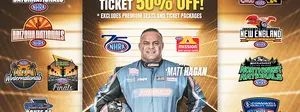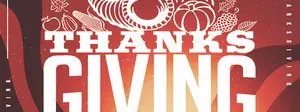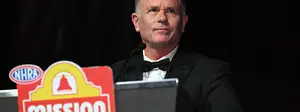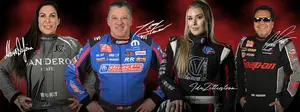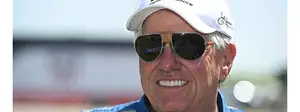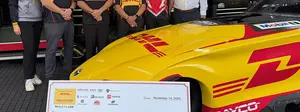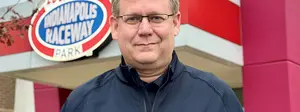

NHRA National Dragster Interview: Graham Light, a lifetime of service to drag racing
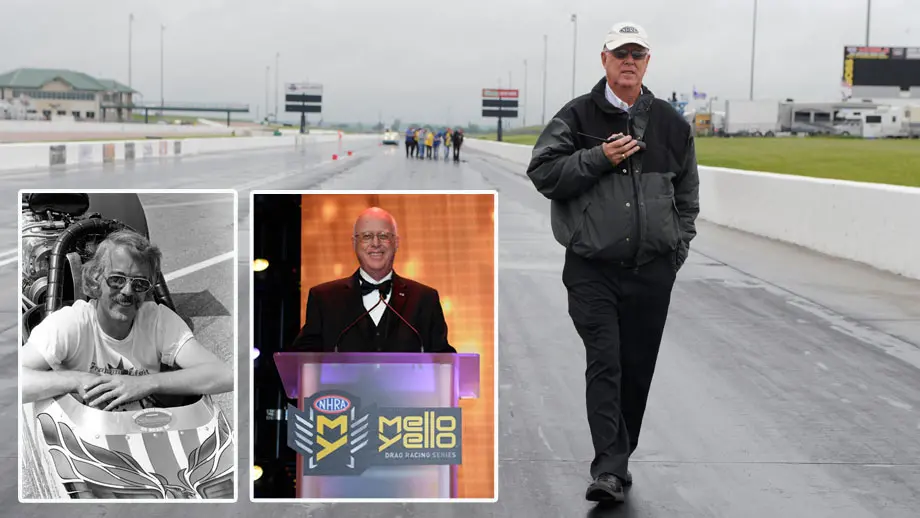

Graham Light, NHRA’s senior vice president, racing operations, will retire at the end of the year, leaving behind a 34-year legacy that touched all aspects of NHRA competition.
The Edmonton, Alta., native got his start in drag racing in the mid-1960s with carbureted and then blown gas dragsters before moving into Top Fuel in 1971, where he became a consistent qualifier and posted a runner-up finish at the 1977 NHRA Finals in Ontario, Calif. Driving the Bubble-Up Top Fuel dragster, he finished ninth in the 1978 NHRA points standings.
From 1974 to 1982, Light owned and operated Edmonton International Speedway — a world-class multiuse facility consisting of a drag strip, a 2.5-mile road course, a 1.5-mile road course, a motocross track, and a quarter-mile oval.
Light joined NHRA in 1984 as a division director and was promoted to competition director in 1987. Later that year, he was promoted to vice president-technical operations and in 1993 was elevated to his current position, where he oversaw competition and operations at all NHRA Mello Yello Drag Racing Series races as well as NHRA Field Operations/Divisions, the NHRA Technical Department, and the NHRA Safety Safari presented by AAA. He has served as chairman of the NHRA Competition Committee, as president of the FIA Drag Racing Commission, as a director for the Automobile Competition Committee of the United States (ACCUS), the American branch of the FIA worldwide racing organization, and on the NHRA Board of Directors.
Did you ever imagine back in the 1960s you’d still be in the sport 50 years later, let alone as a key part of NHRA?
When I started racing, I never envisioned it being anything other than a hobby for me, and I feel very lucky to convert what was a hobby into a livelihood and make a decent living doing it; not many people can say that. Most people work nine to five, five days a week, hate going to work Monday morning, and can hardly wait until Friday, but that’s not been the case for most of my career.
How did your years of racing help you in your current role? How about your time as track operator in Edmonton?
My dad was a mechanic and a sports car racer, and I joined a car club, the Roadents, while I was in high school. They had a flathead Ford dragster and the majority of the members were older than me. Once they graduated high school, they went off and got married, started families, and bought houses, and lost the ability to fund and run a race car. A friend and I approached them about running the car, and they agreed to let us. I ended up winning — or losing, depending on how you look at it — the coin toss to drive it, and we went and campaigned it.

I got my Top Fuel license in 1970 in the blown gas car and got a Top Fuel car and took it to Calgary to make some test runs and got rained on. The first race I went to was a points race in Mission, B.C., and it rained out qualifying. There were only eight cars, so they just matched us up on the ladder, so my first ever run in a Top Fuel car was the first round. I beat the guy, but one of the canard wings broke and the car veered into a ditch. It destroyed the car, and I spent 10 days in the hospital, but it gave me a much better appreciation for the licensing process and requirements. Eventually, we ran the entire NHRA national event circuit for two years, had a sponsor, and finished in the top 10, so I have an appreciation and understanding of what it takes to compete at the highest levels and everything that goes along with that.
While I was running Top Fuel, I was offered the chance to become the general manager of the Edmonton track. Until then, I had always looked at the sport through racers’ eyes, and this gave me a totally new perspective, which certainly was important. I learned about promotions and what it takes to operate a racetrack, and that was a real eye-opener. As an NHRA track operator, I got to attend the National Track Operator meetings and got to know Wally Parks and Dallas Gardner and Bernie Partridge.
And after the racetrack was closed in 1982, you ended up as a division director for NHRA?
I was offered a full-time position with NHRA in mid-1984; there was an opening for division director for Division 6, which at the time encompassed what today is Division 6 and 7, from Alaska to the Mexican border in California. NHRA had combined the two divisions in 1980, but the division office remained in Southern California, and I think that some of the Northwest tracks felt abandoned. At the time, AHRA was based in Spokane [Wash.] and was able to take advantage of that and took over some NHRA tracks. I was still running the Edmonton track when that all happened and running NHRA events, so I was concerned and offered my help to Bernie to try to keep some of the Canadian tracks like Prince George, Saskatoon, and Calgary on board. We ended up creating a special Sportsman series to show these tracks that NHRA did care about them, and it worked. I was kind of an unofficial Canadian division director. Because of all of that and my experience as both a racer and track operator, Bernie obviously thought I was qualified to become the Division 6 director. As the sport continued to grow, in 1987, NHRA split the divisions again, and I stayed as Division 7 director, then moved on to the competition department, tech, and finally race operations.
The division director position is a very tough job because it touches all departments within NHRA, and when you’re running a points race, you’re on an island by yourself. You’re a media person, a marketing person, a legal person, an insurance person, a finance person, and a competition person. It really broadens your knowledge base. You look at the past division directors of NHRA who went on to bigger things with the company, people like Glen Cromwell, Bernie Partridge, Wayne McMurtry, Bob Lang, and Ned Walliser.

Who are the racers you looked up to throughout your career? Who were or are your other heroes?
We Division 6 Top Fuel racers didn’t like Jerry Ruth because he whipped us all the time, but you have to credit him with raising the bar in Division 6. If you could win a points race in Division 6, you could win a national event. We had guys like Ruth and Gary Beck and Herm Petersen and Hank Johnson; it was a tough division because Jerry forced us all to work harder to get better. At the 1973 Grandnational in Montreal, four drivers from Edmonton — me, Gary Beck, Terry Capp, and Gary Egbert — qualified for the eight-car field. That shows you the caliber of the cars Jerry Ruth created in that division, and Beck went on to raise the bar from there.
Certainly, I looked up to people like Don Garlits and Don Prudhomme and Shirley Muldowney — they all raced for me at Edmonton, and I got to race against both Garlits and Shirley — but the person I looked up to most was Wally Parks.
Wally was one of the most dignified and professional people I’ve ever met. When he spoke, people listened. His demeanor was so professional and yet there was the side of him who was a prankster and enjoyed a good time.
Like what you're reading? NHRA National Dragster magazine covers the entire world of NHRA drag racing. Subscribe now and instantly become an NHRA member. |
He was admired by many, many people. He and Bill France Sr. were great friends. I sit on the ACCUS board and Wally’s name still comes up on occasion and is still respected in those circles. He was a class act. He was a real car guy. He loved to get on a golf cart and drive through the Sportsman pits and admire the cars. He loved going to Bonneville, too. I remember the first time that Danny Gracia and I went there to certify cars for FIA for world records and Wally was in seventh heaven. He told us we needed to get there early, because there was nothing better than watching the sun rise on the salt. But he was a people person, too. When he started going to less national events, he insisted that I call him every night, and the first question he’d ask wasn’t who was qualified where but ‘How are the guys?’, meaning the Safety Safari and the division directors and everyone running the event. He cared, of course, how the cars ran and if it was safe, but he really cared about the people.
I think there still are a lot of heroes in this sport I look up to. I’m not going to mention names because I’d probably accidentally leave someone out, but we’ve got sponsors who are heroes and have moved the needle, we’ve got current and past NHRA employees who made tremendous contribution, and, of course, the racers and the racetracks and members of the media.

How has the NHRA grown and improved since 1984? How about the competition aspect in specific?
When I came to NHRA, it was more of a mom-and-pop type of organization. Most of the division directors’ wives worked for NHRA also. There was a limited number of national events so all of the DDs and their wives went to all of the races. The DDs would work in pit control or tech or staging and the wives might work in registration or in the timing tower. Back in those days, we didn’t know what HR [human resources] was; we couldn’t even spell HR, and IT didn’t exist, but evolution and society changes that.
As time went on, the company made the transition from an informal structure to a formal structure because the business climate changed. Where before everyone we hired was from the racing community, we found that we needed experts in their respective fields, and we got that. We’ve evolved to a place where we have a very strong team in place with expertise that we need. They’re dedicated, and they’re passionate, and I feel very comfortable in my retirement in the group that we have.
On the racing side, when you look at the quality of the equipment that people have and the professionalism of the teams, the level of facilities we have today is far greater than what it was when I raced. I can’t wait to see what it’s all going to look like 10 or 20 years from now. In 1951, Wally had no idea we would end up where we are today, and I don’t think we can envision what it will look like in the future, but I know it’s positioned to be bigger and better.
What has been the toughest challenges of the job?
Racers, by nature, are competitive, and they don’t like being told they can’t do a certain thing that they want to try to do to make their cars faster. The owners are pressured for results by the sponsors and the crew chiefs are, in turn, pressured by the owners.
It’s important to be consistent and apply the rules the same way to your world champions as you do to a new team. You can’t put the name of the sponsor or the racer as a determining factor as to whether a policy applies. The rules and policies need to be as black and white as possible because a team might interpret a rule one way that’s beneficial to them, while we need to interpret the rules as to what’s beneficial to the sport, and as the competition has gotten more intense and the technology became more sophisticated, we hired engineers to help us understand what was going on and to develop rules.
What contribution during your time are you most proud of?
The biggest accomplishment has been putting that team together. There’s not one thing that was so revolutionary that I can say I thought of that; it has always been a team effort, and it takes every one of those team members to make it all work. Certainly cost-containment is something we’ve worked on as well as the continuing safety initiatives. When I drove in Top Fuel, the cars ran 250 mph; today, they run 330, and they’re safer today than when they ran 250. It has been many people within NHRA and outside of NHRA, like SFI and the safety-equipment manufacturers, and even other sanctioning bodies; we have great relationships with people at NASCAR and IndyCar and FIA. We learn from them, and they learn from us.
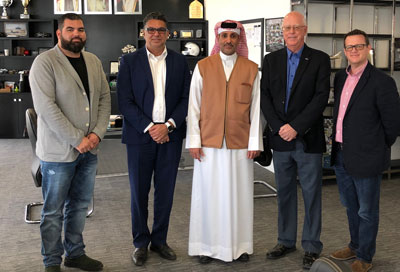
You’ve been heavily involved in NHRA’s international outreach. What has that experience been like?
Because of the worldwide acceptance of our place and history in the sport, people look to us for leadership. For example, NHRA is the main contributor to the FIA Drag Racing Commission; their rules are almost verbatim to NHRA rules. The enjoyable part for me has been working with some of these countries whose stage of development in the sport is back where we were in the 1950s or ’60s, trying to combat street racing and finding alternatives for that on abandoned airfields. We have a lot of history and expertise we can share with them to help escalate their development faster than ours did. I’ve met some very interesting people from all walks of life who all have common interests in drag racing, from Australia to the Middle East to Europe and Asia. That’s been very rewarding for me.
We also have our NHRA Worldwide program through, which we have some very good relationships with tracks in the Middle East, in Abu Dhabi and Bahrain and Kuwait. They have beautiful racetracks run by passionate people. Back in January, we sent Danny Gracia, Mike Rice, and Bob Lang to Abu Dhabi for a week. Bob taught them emergency response and track prep, Mike taught them scheduling and timing, and Danny taught their tech people. And it’s a two-way street. NHRA is by far the No. 1 sanctioning body in the world, but that doesn’t mean we know everything. We’ve been taught things by our track operators around the world that trickle down to the equipment we use. We’re always open-minded and can always learn.
We made a lot of new friends, and we’ve found that all of the other confrontations going on in the world today don’t apply here. It’s all about drag racing, and we’re all drag racers.
What are your plans for your retirement?
I have a granddaughter who will turn two early next year and will have a baby sister in May. If I have any regrets about my career, it’s the time I spent away from my wife and kids, so maybe I can make up for some of that with my grandkids. I plan to work on my golf game to get at least half-ass decent, because right now I’m lousy. I have a couple of hot rods — a ’32 Ford roadster and a ’55 Chevy — that I play with, and I’m certainly willing to help NHRA with any special projects they might have in the future, and you’ll see me around at some events. I’ve been in drag racing for 50-plus years; you can’t just quit cold turkey and walk away. I still have a great passion for all forms of the sport.
A subscription to NHRA National Dragster magazine instantly makes you a member of the world's largest motorsports sanctioning body. Each issue is packed with spectacular action photography, in-depth features, and the sport's best racing coverage. You'll also get free access to the NHRA Membership Hospitality Center at every NHRA Mello Yello Drag Racing Series event, discounts, and more. Join now!























